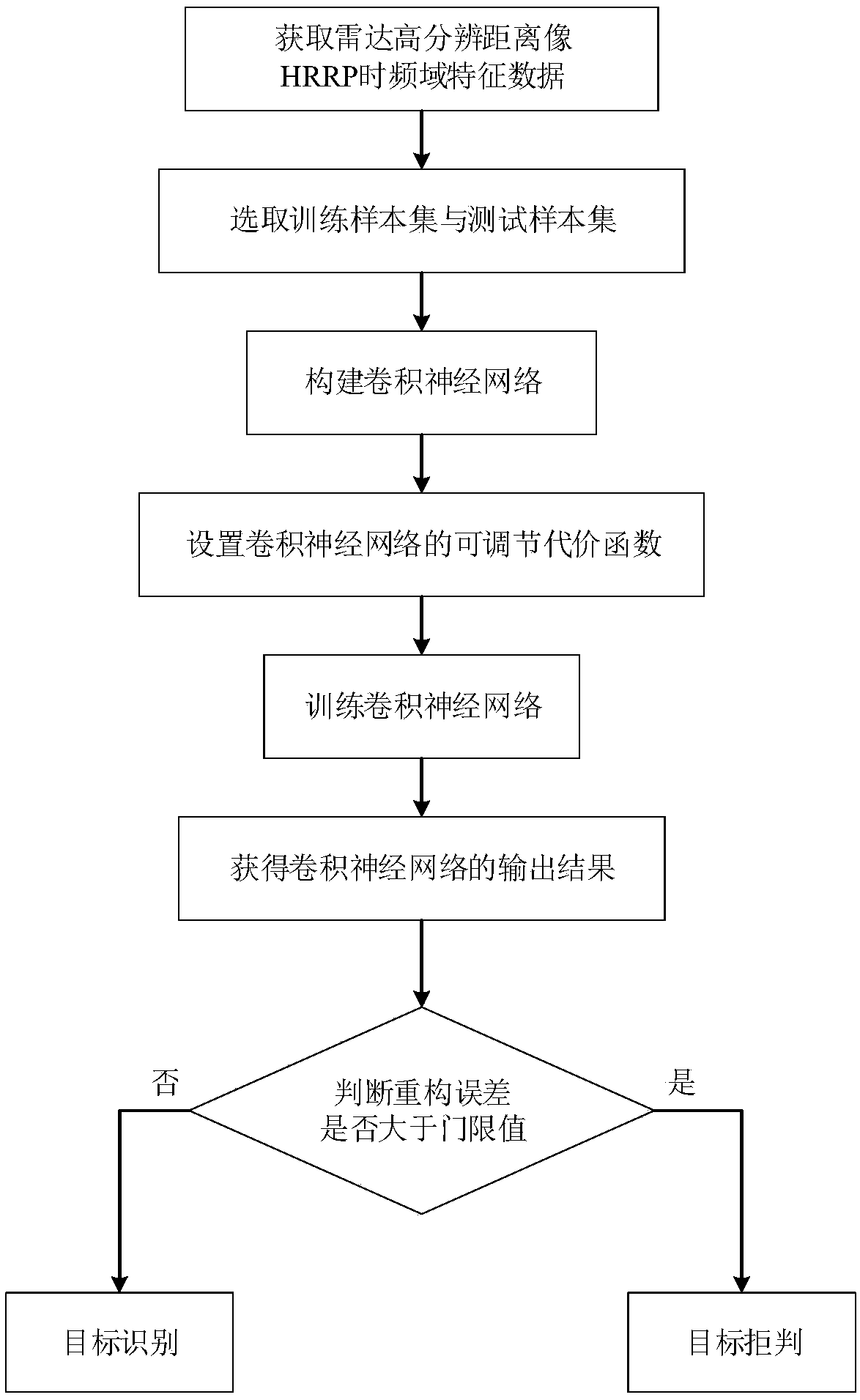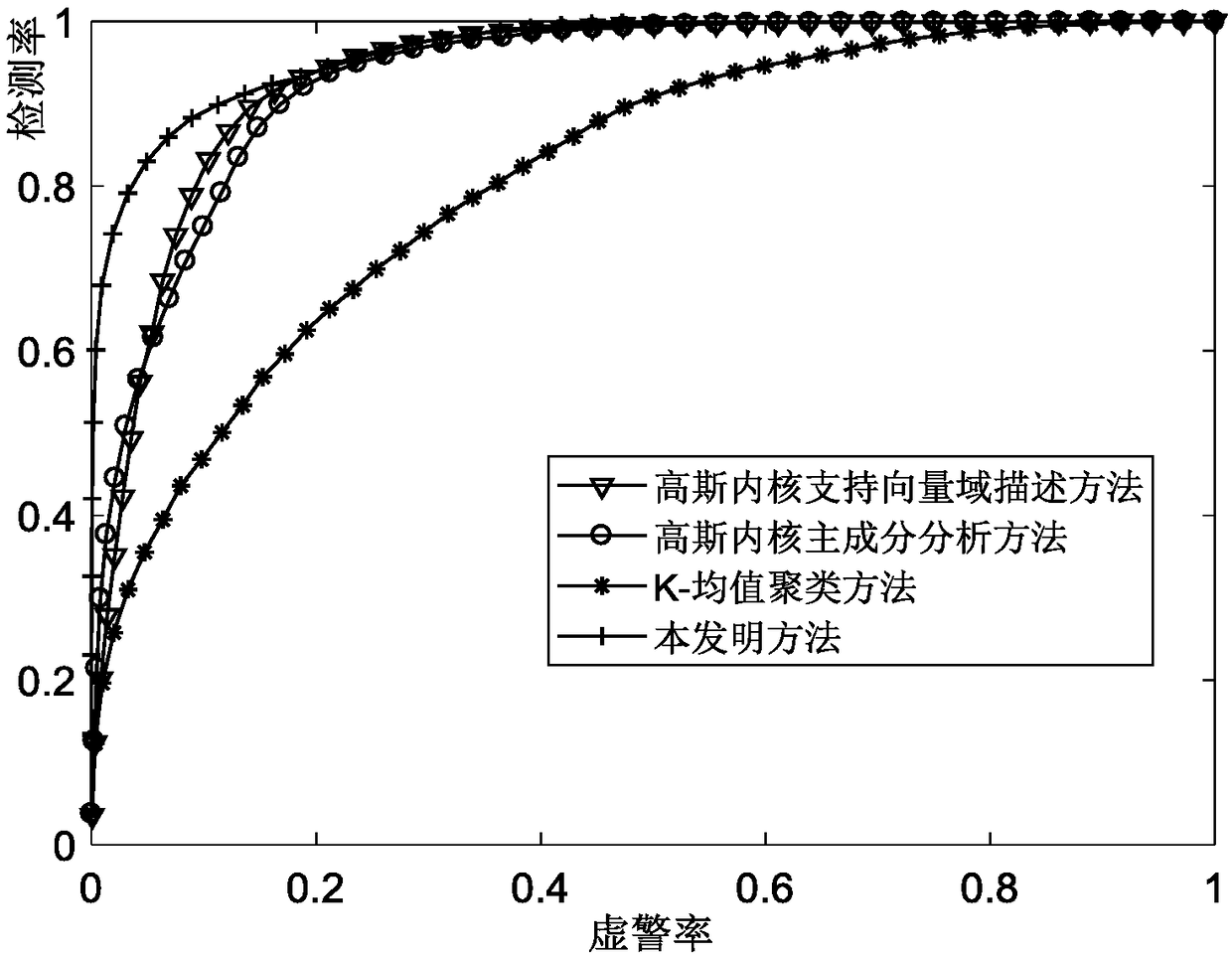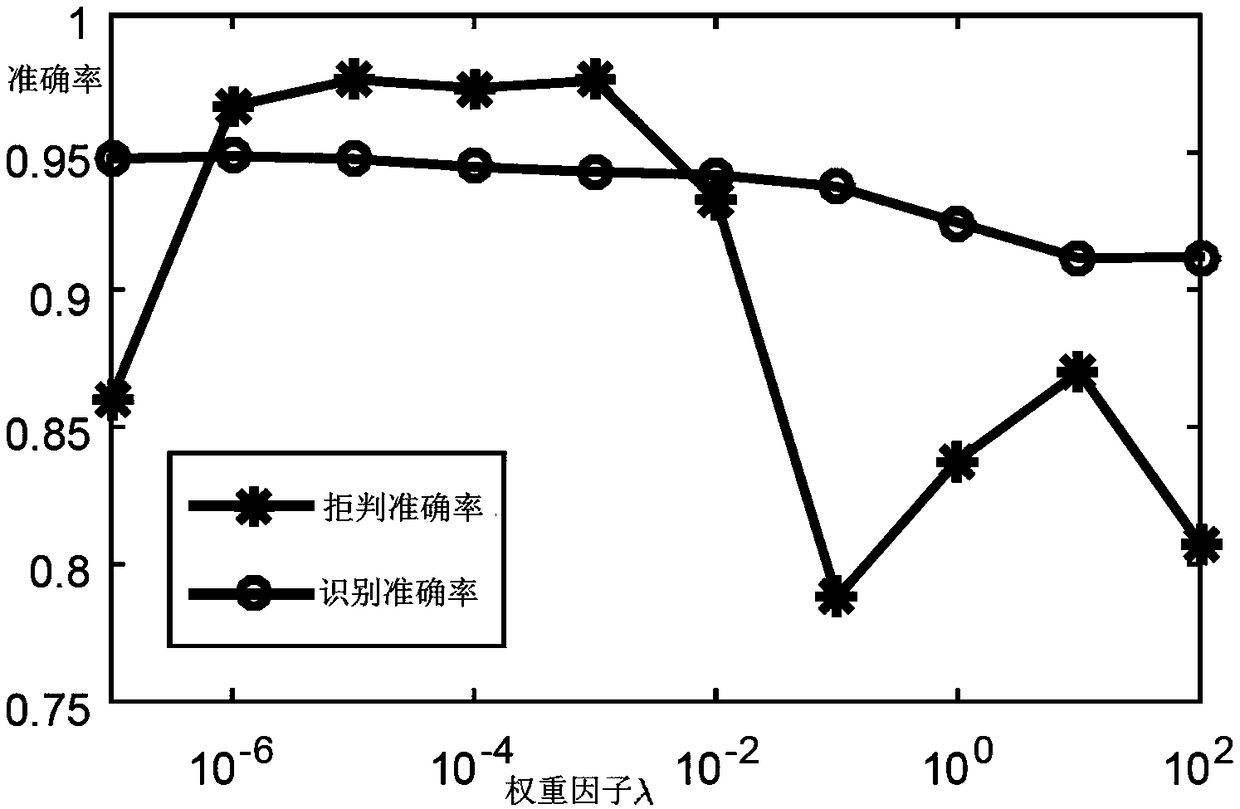A CNN-based HRRP target recognition method for a rejectable radar
A technology of target recognition and target classification, applied in the field of high-resolution range image HRRP target recognition of refusal radar, can solve the problems of reduced target recognition accuracy, lack of rejection performance, lack of rejection ability, etc., to overcome the performance Non-adjustable, flexible rejection and recognition performance, the effect of flexible adjustment
- Summary
- Abstract
- Description
- Claims
- Application Information
AI Technical Summary
Problems solved by technology
Method used
Image
Examples
Embodiment Construction
[0042] The present invention will be further described below in conjunction with the accompanying drawings.
[0043] Refer to attached figure 1 , to further describe the specific steps of the present invention.
[0044] Step 1. Obtain HRRP time-frequency domain characteristic data of radar high-resolution range profile.
[0045] The amplitude information along the range dimension of the radar echo on the radar line of sight is extracted as high-resolution range profile data.
[0046]The radar high-resolution range image data is preprocessed to obtain the time-frequency domain characteristic data of the high-resolution range image.
[0047] The specific steps for preprocessing the radar high-resolution range image data are as follows:
[0048] In the first step, according to the following formula, the radar high-resolution range profile data is subjected to two-norm normalization processing:
[0049]
[0050] where x 1 Indicates the high-resolution range image data afte...
PUM
 Login to View More
Login to View More Abstract
Description
Claims
Application Information
 Login to View More
Login to View More - R&D
- Intellectual Property
- Life Sciences
- Materials
- Tech Scout
- Unparalleled Data Quality
- Higher Quality Content
- 60% Fewer Hallucinations
Browse by: Latest US Patents, China's latest patents, Technical Efficacy Thesaurus, Application Domain, Technology Topic, Popular Technical Reports.
© 2025 PatSnap. All rights reserved.Legal|Privacy policy|Modern Slavery Act Transparency Statement|Sitemap|About US| Contact US: help@patsnap.com



